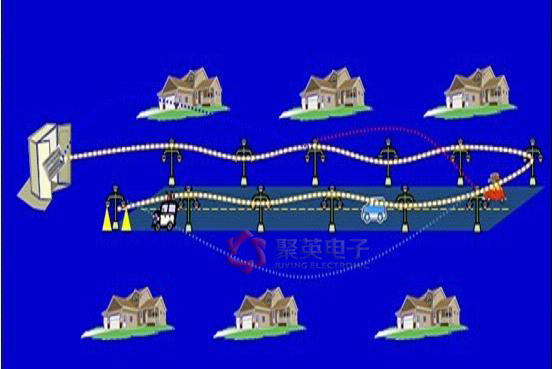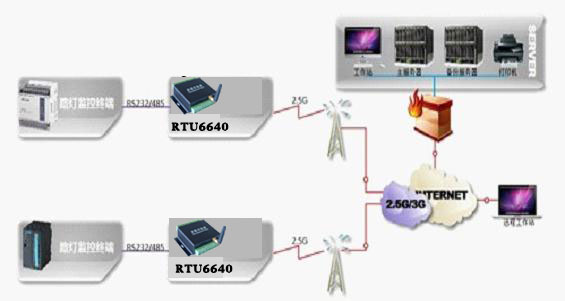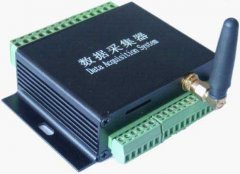The remote control system of street lamps can better solve the problem of source consumption. The state has set the goal of reducing energy consumption per unit of GDP by 20% and reducing the total emission of major pollutants by 10% during the Eleventh Five Year Plan period. It emphasizes the need to implement the requirements of resource conservation and environmental protection, and build a low input, high output, low energy consumption, less emission, energy recycling A sustainable national economic system and a resource-saving and environment-friendly society. The power consumption of urban public lighting accounts for 30% of the lighting power consumption in China, accounting for 10-12% of the total power generation in China. It is estimated that about 19% of the world's electric energy is used for lighting. The proportion of electric energy consumption in this part is considerable.
1、 Current situation of urban street lamp management
With the rapid development of urban construction and the continuous improvement of road lighting quality, the government and people pay more and more attention to the lighting rate of street lamps and the image of the city. The construction of road lighting in urban areas has developed rapidly, and the number of street lamps is increasing day by day. However, the management department has completed several times of the previous work tasks with the original manual operation or timing control, which can not solve the inherent contradiction between the lighting rate and energy conservation. At this time, the corresponding method is proposed
Disadvantages of traditional timing control
◇ unable to control in real time: due to the single control mode, the classified control of lighting equipment with different lamp types, different areas and different time periods cannot be realized, resulting in unreasonable resource allocation and a large amount of waste of electric energy.
◇ unable to switch on and off the lights in time: the current control mode cannot switch on and off the lights automatically in bad weather (such as strong cloudy days). Large scale celebrations, political activities and visits by leaders and groups can not be controlled in time and flexibly, which affects the image of urban lighting.
◇ information cannot be fed back: various information of urban road lighting cannot be fed back to the management department. Such as voltage, current, power consumption of street lamp control equipment, lighting rate of road, fault information, control mode and other information transmission. As a result, the management department cannot grasp the actual lighting situation in time.
◇ serious waste of electricity: for the road lighting facilities controlled by manual switching of lights, the lighting cycle is long because the lights need to be switched on and off manually every day; The road lighting facilities controlled by clock control can not be adjusted automatically with the season, resulting in serious power waste.
◇ untimely fault detection: when the street lamp fails, the information cannot be transmitted to the management department in time. Relying on the maintenance personnel to conduct regular inspection every day, in addition to increasing human, material and financial resources, the emergency repair time will be delayed due to unknown fault conditions, affecting the lighting at night and causing great inconvenience to pedestrians and vehicles.
◇ frequent light on adjustment cycle: because the sunrise and sunset time is constantly changing every day, the staff need to often adjust the light on and off time at each control point. With the gradual expansion of the city, the scope of work is also expanding.
2、 Construction objectives
Use computer monitoring technology, adopt Juying electronic advanced GPRS wireless communication technology (rtu6640), energy-saving control technology, and combine spatial geographic information technology to build an intelligent monitoring system for urban lighting, realize automatic monitoring and fine management of rapidly developing urban lighting, and further improve the quality of road lighting, so as to improve the quality of service; Further improve the efficiency of maintenance and overhaul, so as to ensure the overall lighting rate and equipment integrity rate of the city; Further reduce energy consumption and labor intensity, so as to avoid unnecessary waste of electric energy and human and material resources, and fundamentally realize on-demand lighting, efficient energy conservation and fine management.
3、 Introduction of street lamp real-time monitoring and energy saving system
The urban lighting intelligent monitoring system adopts Internet of things technology, industrial automation control technology and advanced wireless transmission means of Xiamen Sixin to carry out various scientific and effective control and management of urban street lamp facilities, such as wire control, point control and point measurement, so as to realize "five remotes" (telemetry, remote control, remote signaling, remote viewing and remote adjustment) and single lamp energy-saving control, so as to save electric energy and improve work efficiency, Improve the modern management level and scientific means of urban lighting facilities.


Street lamp control terminal (rtu6640) street lamp acquisition and control terminal is composed of primary terminal, street lamp control and monitoring cabinet and secondary terminal. The monitoring cabinet includes industrial computer, single chip microcomputer for electric energy measurement, multi-channel control board and monitoring board; The secondary terminal is installed in each lamp, including power carrier module (epcw) and input / output interface board; The street lamp control terminal can monitor the on-off condition, power load state, pole damage alarm, leakage alarm and other functions of each street lamp in real time
Wireless transmission equipment
Juying electronic rtu6640 (GPRS RTU) adopts industrial DB9 serial port, which is connected with the PLC in the street lamp monitoring terminal through 232 / 485. The inserted SIM data card forms network communication between the street lamp monitoring terminal and the data management center through GPRS network, so as to realize the remote monitoring of street lamp operation by the data management center. Rtu6640 adopts the international standard TCP / IP communication protocol, and realizes the data transmission function. The high-standard industrial design and small shape are well integrated into the primary terminal of street lamp monitoring.

Data management center
1) Remote control: the master station computer automatically controls the on / off state of street lamps in the whole city according to the set longitude and latitude time curve, and can also manually control the on / off state of any primary terminal and secondary terminal in the master station.
2) Telemetry: automatic patrol measurement or random detection of working parameters such as lighting rate, voltage, current, power factor, active power and frequency of each terminal. During automatic operation, as long as the terminal changes, it will immediately transmit the changed data to the master station without patrol inspection of the master station.
3) Remote signaling: acquisition of on / off status, fault, alarm and other information of each terminal to ensure the effective and normal operation of the system.
The general architecture of the system rtu6640 connects and communicates with the PLC in the street lamp monitoring primary terminal through the standard 232 / 485. The data center can adopt ADSL, fixed IP and private network APN to access the network.
Rtu6640 first carries out GPRS dial-up Internet access, then automatically initiates TCP connection to the data management center, and starts data transparent transmission after successful handshake. The street lamp monitoring terminal collects the data centrally and transmits the data to rtu6640 through PLC. After receiving the data, rtu6640 immediately transmits the data to the data management center through GRPS network. The data management center analyzes and processes the uploaded data, obtains intuitive results and corresponding instructions, and sends them to rtu6640 through GPRS network. Rtu6640 immediately transmits them to PLC through 232 / 485. PLC makes corresponding control and processing on street lamps according to the instructions, so as to achieve the effect of remote control of street lamps.
4、 System benefit
economic performance
After the intelligent monitoring and management of urban lighting and single lamp energy-saving control system are adopted, the switches of street lamps all night and midnight lamps in the city can realize on-demand lighting and precise management of each lamp. Due to the reduction of light on time, the service life of light source appliances is prolonged, the management and operation cost is reduced, and the economic benefit is further improved. Achieve on-demand regulation of lighting brightness, save energy and manage operation costs.
social results
After adopting the urban lighting intelligent monitoring and management system and single lamp energy-saving control, the system can automatically control the switching operation of each street lamp of urban lighting in the whole city. At the same time, the state of each street lamp is patrolled efficiently and quickly by the computer. The dispatcher can know the location and state of the fault in time after the fault occurs, which provides a strong guarantee for rapid and timely repair. The timely maintenance of street lamps can greatly reduce the complaints to the lighting management department and the occurrence of road traffic accidents, which is conducive to the public security of the city and produce great social benefits, so as to further improve the image of the city.
Management benefit
The urban lighting intelligent monitoring management and single lamp energy-saving control system uses the computer to timely and comprehensively find the faults in the operation of each street lamp, so as to realize the real sense of "on duty waiting for alarm", which not only greatly reduces the loss of urban lighting inspectors and vehicles, but also reduces the maintenance cost, Moreover, the exact location and basic state of the fault have been known before the maintenance vehicle starts, and there is no need to rely on manual search of file drawings, simple textual database information and line patrol search, which greatly shortens the maintenance response time, improves the maintenance efficiency and ensures the lighting rate of street lamps, which will produce great economic and management benefits.

 Manager Wang
Manager Wang
 OfficialAccounts
OfficialAccounts